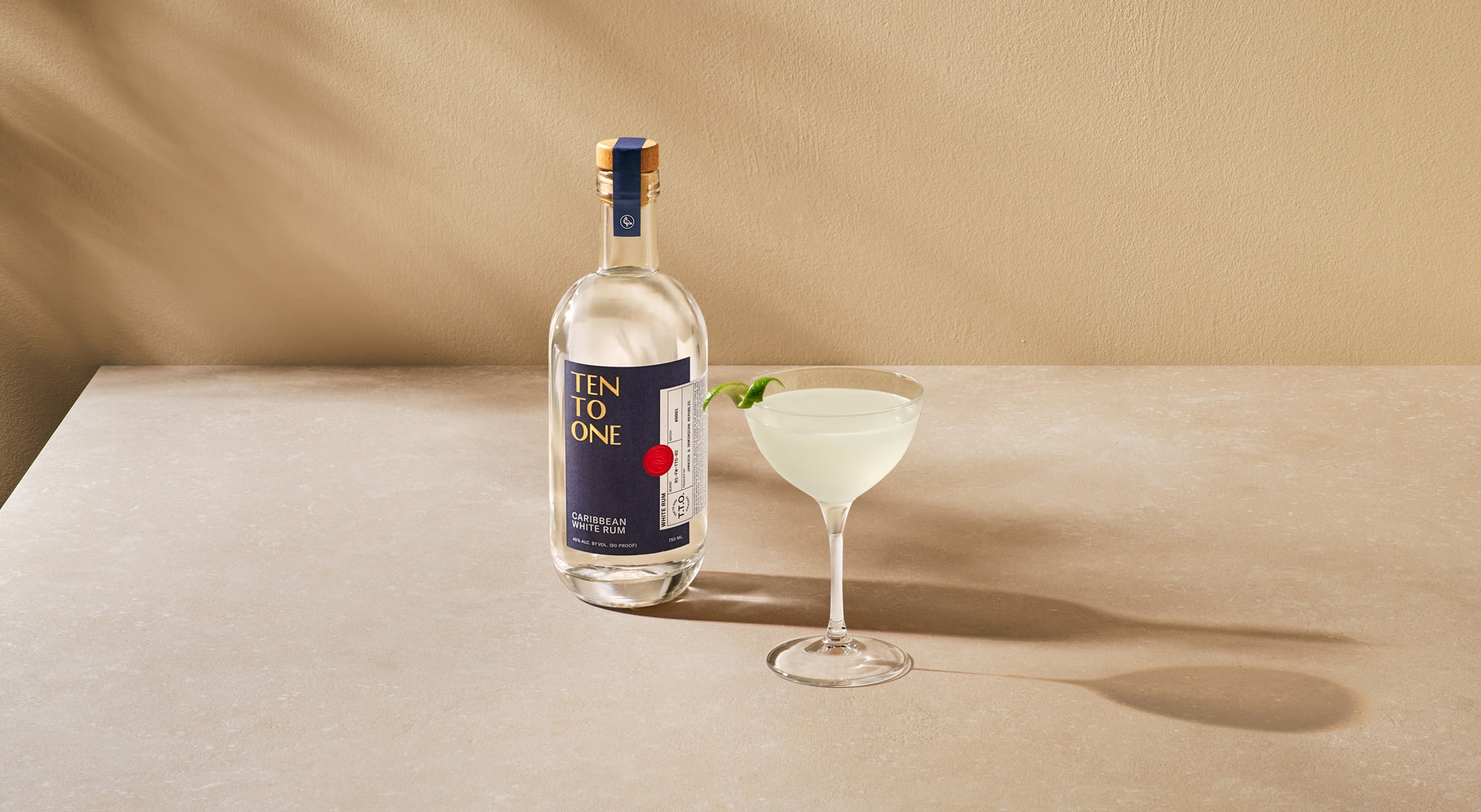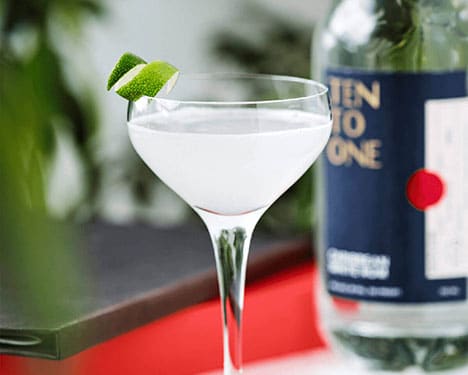Daiquiri 101: Taste, Cocktails, Origins and Tips
Rum. Lime. Simple.
Shop NowRum. Lime. Simple.
Shop Now

The unique blend of Dominican and Jamaican rum in Ten To One’s award winning White Rum make it ideal for use in cocktails. At 90 Proof it shines through in this Daiquiri recipe.
2oz Ten To One White Rum
1oz Fresh Lime Juice
.75oz Simple Syrup
Lime Peel or a Lime Wheel
Coupe
Add all ingredients to a shaker with ice. Shake it like you mean it. Strain into your favorite cocktail glass. Garnish with lime. Celebrate with friends.
Fresh lime juice is essential for a quality daiquiri experience. Avoid using bottled lime juice as it can taste artificial. To get the most juice from each lime, try rolling them out before cutting into them.
The quality of the rum you use can greatly affect the taste of the daiquiri. Choose a good quality white rum that is smooth and not overly harsh.
The Daiquiri is a finely balanced cocktail that walks the line between sour and sweet. Be sure to use your cocktail measure.
The key to a good daiquiri is to shake it well with ice until it's thoroughly chilled. This will also give the cocktail a nice frothy texture.
To keep the daiquiri as refreshing as possible, serve it in a chilled glass straight from the freezer.
To add a different dimension to your Daiquiri try experimenting with different syrup infusions or using demerara syrup in place of simple syrup.

The strength of a daiquiri varies based on the recipe and preparation. A classic daiquiri, made with 2 ounces of rum and served "up" without ice, typically has an alcohol content of 20-25% ABV (alcohol by volume), similar to most standard cocktails. However, adding more rum or serving it "on the rocks" with ice can slightly lower the alcohol content. It's important to drink responsibly and be mindful of the alcohol content in any cocktail. Enjoying a daiquiri requires understanding its strength. A classic recipe consists of 2 ounces of rum served "up" without ice, resulting in a 20-25% ABV (alcohol by volume). Modifications like adding more rum or serving it "on the rocks" with ice can marginally decrease the alcohol content. Stay responsible and aware of the alcohol content in your cocktails for a safe and enjoyable experience.

The daiquiri is believed to have originated in the late 1800s or early 1900s in Cuba. The cocktail was first created by American mining engineers who were working in the region, and it quickly became popular among locals and visitors alike. Over time, the recipe for the daiquiri has evolved, and many variations have been created, but the basic ingredients of rum, lime juice, and sugar remain the foundation of the cocktail.

A drink is considered a daiquiri when it contains the following three key ingredients: rum, lime juice, and sweetener (such as simple syrup).
A classic daiquiri combines sweet and tart flavors in a refreshing, balanced profile. Lime juice provides a bright citrusy acidity, complemented by the sweetness of simple syrup and the distinct taste of rum. The quality and type of rum used, along with the lime-to-sweetener ratio, influence the overall taste. A well-crafted daiquiri is smooth, well-balanced, and finishes clean and crisp. Variations may incorporate fruit purees or herbs, offering different flavor profiles.
Typically, white rum is used to make a classic daiquiri, but some variations may call for aged rum for added depth of flavor. The rum is combined with lime juice and sweetener (such as simple syrup) to create a refreshing and balanced cocktail.
The best glassware for a daiquiri depends on your preference. A coupe glass showcases the texture and aroma when served "up." A rocks glass keeps the drink cool when served "on the rocks." A Nick and Nora glass offers a smaller, elegant serving for a special touch.
Daiquiris and margaritas are classic cocktails with differences. Daiquiris use rum, citrus juice, and sweetener, while margaritas use tequila, citrus juice, sweetener, and often have a salt rim and orange liqueur. Margaritas are typically served on the rocks, while daiquiris can be served up or on the rocks. The daiquiri's simplicity allows for more versatility by experimenting with different rums, juices, and sweeteners.
The classic daiquiri isn't frozen; that misconception stems from the popularity of frozen daiquiris, a variation made by blending rum, lime juice, sweetener, and ice. Classic daiquiris are served "up" or "on the rocks."
You can adjust the ratio of lime juice to simple syrup to your preferred sweetness and tartness. Some people like to use a 1:1 ratio, while others prefer a 2:3 ratio.

Please confirm you are above the legal drinking age in your country
Sorry, you are not eligible to enter this website. Please visit responsibility.org to learn more.
Enter your email to get a 15% discount code